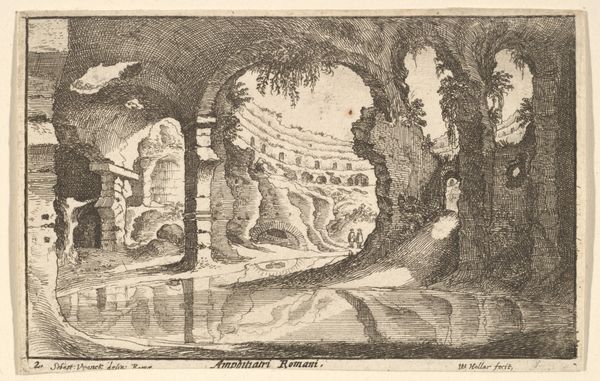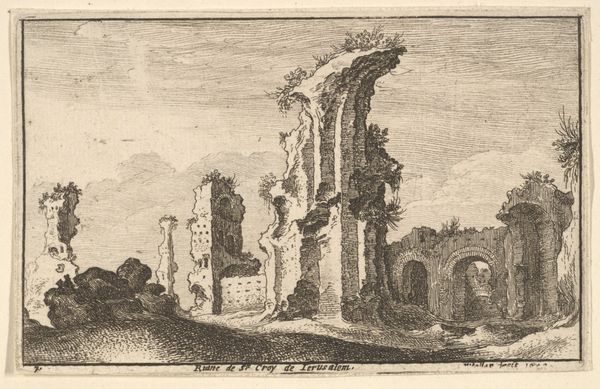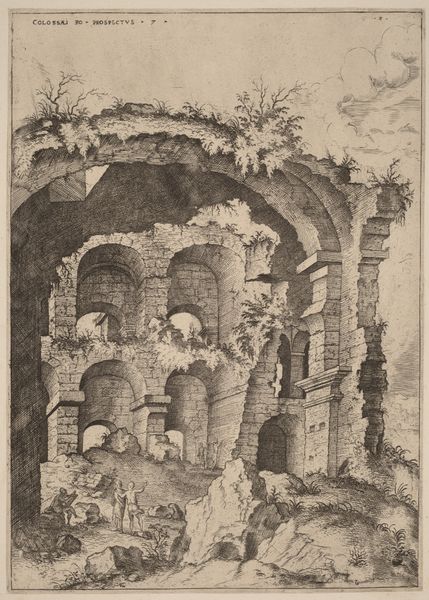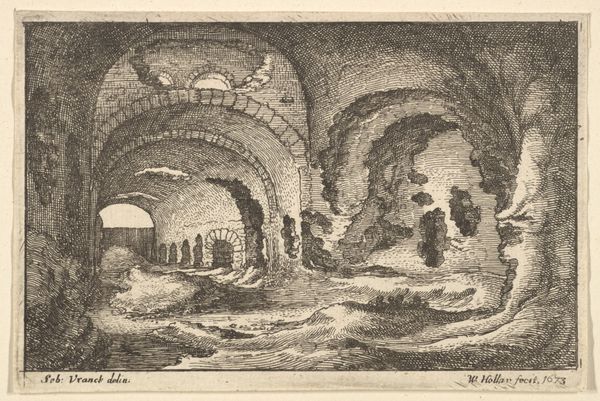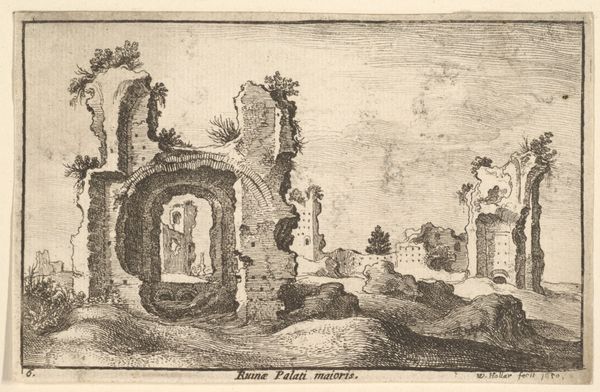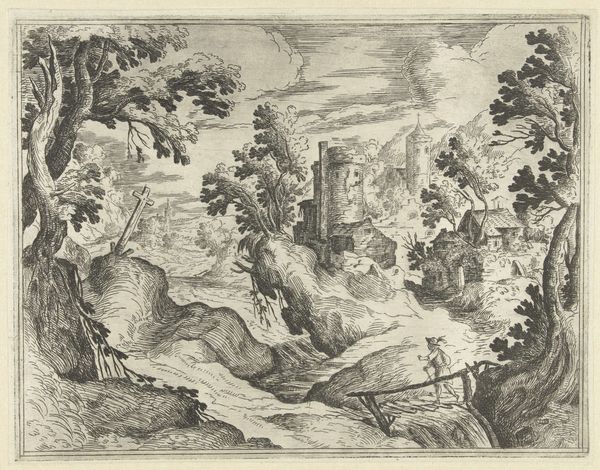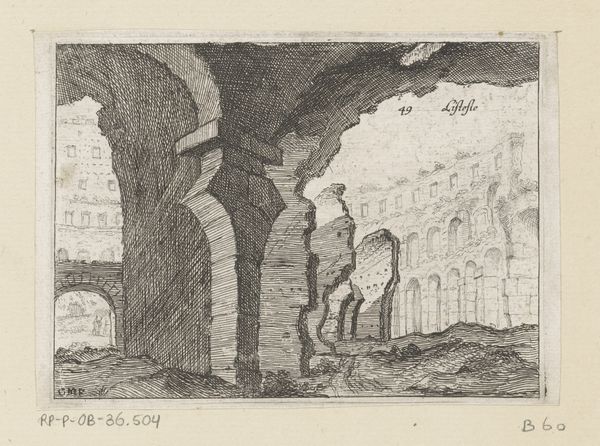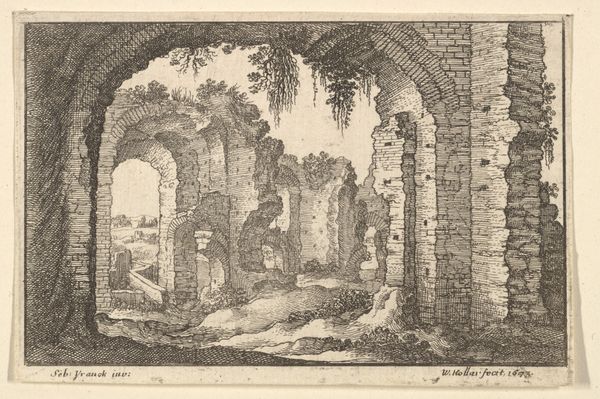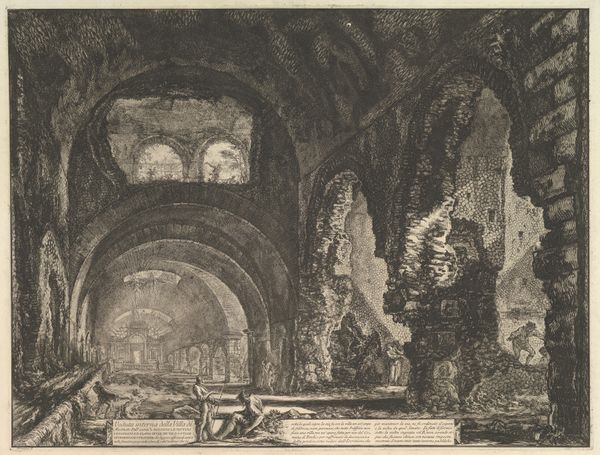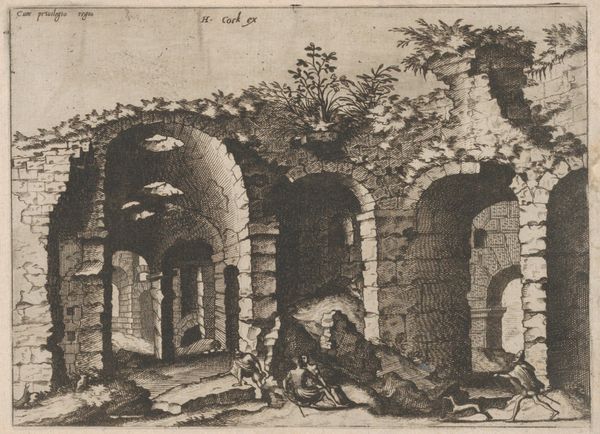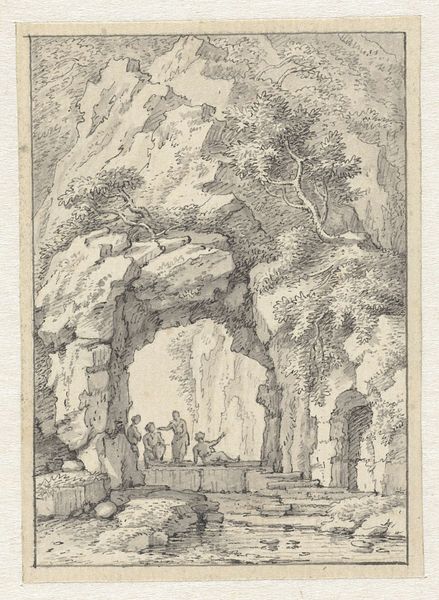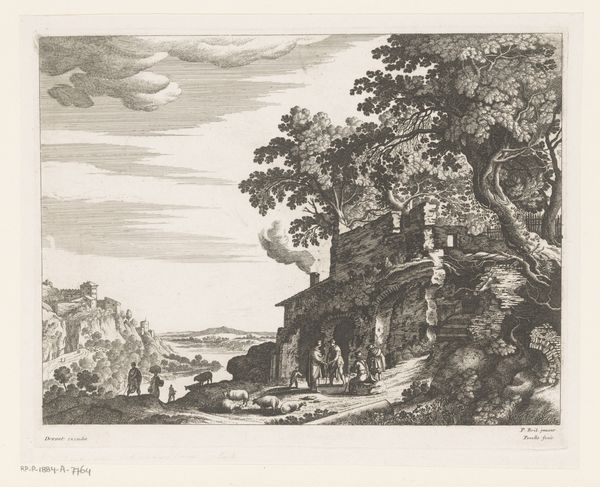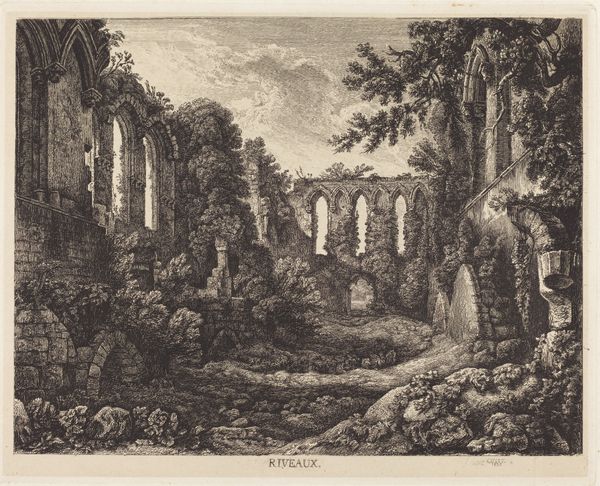
drawing, print, etching, engraving, architecture
#
drawing
#
baroque
# print
#
etching
#
landscape
#
engraving
#
architecture
Dimensions: Sheet (clipped impression): 2 11/16 × 4 3/16 in. (6.8 × 10.6 cm)
Copyright: Public Domain
Wenceslaus Hollar created this print, "Ruinae Coliseum," using etching, a process that uses acid to cut into a metal plate, sometime in the 17th century. Hollar was born in Prague and lived through the Thirty Years' War, experiencing firsthand the devastation of conflict. He later became known for his detailed topographical views and architectural studies, like this one. The Coliseum, once a symbol of Roman power, is here rendered as a ruin. The image evokes a sense of transience and the inevitable decay of human achievements. This sentiment resonates with the broader Baroque artistic interest in vanitas and the fleeting nature of life. Consider the emotional weight carried by ruins. They are not just remnants of the past but also reminders of lost cultures and histories. Hollar’s print invites us to contemplate the cyclical nature of civilization. It encourages us to reflect on themes of loss, memory, and the enduring power of time.
Comments
No comments
Be the first to comment and join the conversation on the ultimate creative platform.
